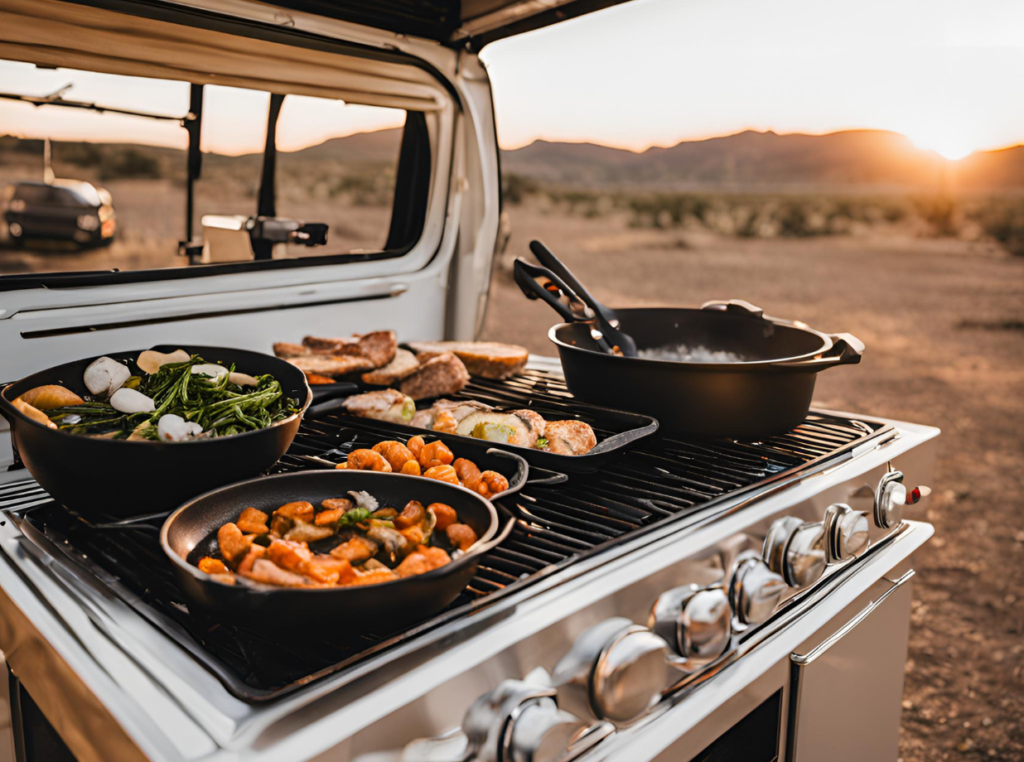Choosing the right portable stove can make or break your outdoor cooking experience. This guide will help you navigate the key factors to consider when selecting a portable stove.

Types of Portable Stoves
Key Factors to Consider
Fuel Type
- Canister fuel (propane, butane, isobutane)
- Liquid fuel (white gas, kerosene, unleaded gasoline)
- Wood
- Alcohol
- Solid fuel tablets
Consider fuel availability, burn time, and performance in different conditions.
Weight and Portability
- Ultralight options (< 3 oz)
- Compact options (3-16 oz)
- Larger camp stoves (> 1 lb)
Balance weight with your needs and carrying capacity.
Cooking Power (BTU output)
- Low output (< 5,000 BTU)
- Medium output (5,000-10,000 BTU)
- High output (> 10,000 BTU)
Higher BTU means faster cooking but often comes with increased fuel consumption.
Simmer Control
Important for more precise cooking. Not all stoves offer good simmer control.
Wind Performance
Look for windscreens or integrated windbreak designs for better performance in windy conditions.
Stability
Consider the stove’s base and pot supports, especially important for larger pots.
Ignition Type
- Manual (lighter or matches required)
- Integrated piezo igniter
Price Range
- Budget (< $30)
- Mid-range ($30-$100)
- High-end (> $100)
Durability and Maintenance
Consider build quality, availability of replacement parts, and ease of field maintenance.
Top Brands to Consider
Environmental Considerations
- Fuel efficiency
- Eco-friendly fuel options
- Leave No Trace principles
Safety Tips
- Always use in well-ventilated areas
- Follow manufacturer’s instructions
- Be aware of fire bans and restrictions in your area
Remember, the best stove for you depends on your specific needs, cooking style, and the conditions you’ll be using it in. Consider renting or borrowing different types before making a purchase.
Frequently Asked Questions (FAQ)
What’s the best portable stove for backpacking?
For backpacking, lightweight canister stoves are often preferred. Brands like MSR PocketRocket or Jetboil MiniMo are popular choices due to their compact size and efficiency.
Can I use my portable stove inside a tent?
No, it’s not safe to use portable stoves inside tents due to fire risk and potential carbon monoxide poisoning. Always use stoves in well-ventilated outdoor areas.
How long does a fuel canister typically last?
This varies based on stove efficiency and usage, but a 100g canister usually provides about 1 hour of cooking time on high heat. Some efficient stoves can boil up to 12 liters of water per 100g canister.
Are liquid fuel stoves better than canister stoves?
Each has advantages. Liquid fuel stoves perform better in cold weather and at high altitudes, and their fuel is often cheaper. Canister stoves are generally easier to use and more compact.
What’s the difference between BTU and kWh?
BTU (British Thermal Unit) and kWh (kilowatt-hour) are both units of energy. For stoves, BTU/hr is commonly used in the US to measure heat output, while kW is more common in other countries. 1 kW ≈ 3,412 BTU/hr.
Can I take my portable stove on an airplane?
Empty stoves are generally allowed in carry-on and checked baggage. However, fuel canisters are prohibited. Always check with your airline for specific regulations.
How do I clean and maintain my portable stove?
Regular cleaning with warm soapy water and a soft cloth is usually sufficient. For deeper cleaning, consult your stove’s manual. Periodically check and replace O-rings and gaskets as needed.
What’s the most eco-friendly type of portable stove?
Wood-burning stoves can be eco-friendly if used responsibly, as they don’t require packaged fuel. Solar stoves are also environmentally friendly but have limited functionality.

